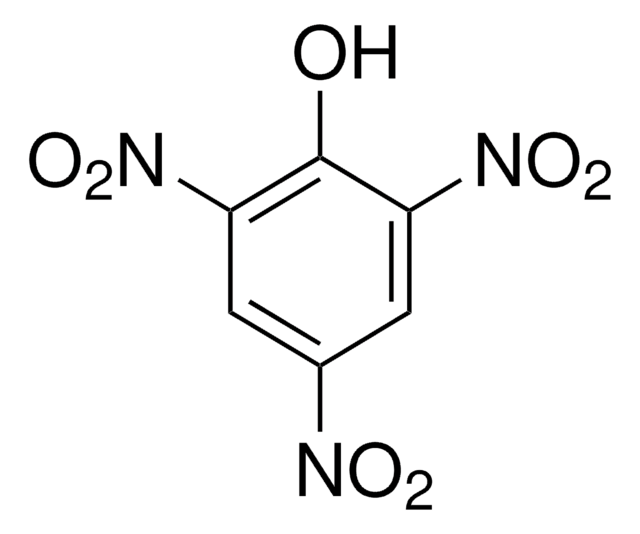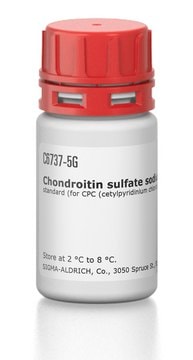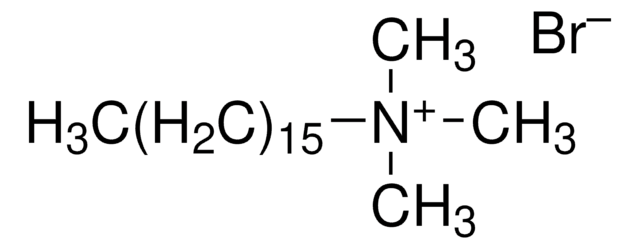C0732
Cetylpyridinium chloride
meets USP testing specifications
Sinónimos:
Hexadecylpyridinium chloride monohydrate, Cetylpyridinium chloride monohydrate
About This Item
Productos recomendados
Agency
USP/NF
meets USP testing specifications
Nivel de calidad
descripción
cationic
Análisis
98.0-102.0% anhydrous basis
formulario
solid
mol peso
358.00 g/mol
técnicas
dialysis: suitable
electrophoresis: suitable
protein purification: suitable
espectro de actividad antibiótica
Gram-negative bacteria
Gram-positive bacteria
fungi
viruses
aplicaciones
pharmaceutical (small molecule)
Modo de acción
cell membrane | interferes
cadena SMILES
O.[Cl-].CCCCCCCCCCCCCCCC[n+]1ccccc1
InChI
1S/C21H38N.ClH.H2O/c1-2-3-4-5-6-7-8-9-10-11-12-13-14-16-19-22-20-17-15-18-21-22;;/h15,17-18,20-21H,2-14,16,19H2,1H3;1H;1H2/q+1;;/p-1
Clave InChI
NFCRBQADEGXVDL-UHFFFAOYSA-M
¿Está buscando productos similares? Visita Guía de comparación de productos
Aplicación
Palabra de señalización
Danger
Frases de peligro
Consejos de prudencia
Clasificaciones de peligro
Acute Tox. 2 Inhalation - Acute Tox. 4 Oral - Aquatic Acute 1 - Eye Dam. 1 - Skin Irrit. 2 - STOT SE 3
Órganos de actuación
Respiratory system
Código de clase de almacenamiento
6.1A - Combustible acute toxic Cat. 1 and 2 / very toxic hazardous materials
Clase de riesgo para el agua (WGK)
WGK 3
Punto de inflamabilidad (°F)
Not applicable
Punto de inflamabilidad (°C)
Not applicable
Equipo de protección personal
Eyeshields, Faceshields, Gloves, type P3 (EN 143) respirator cartridges
Elija entre una de las versiones más recientes:
¿Ya tiene este producto?
Encuentre la documentación para los productos que ha comprado recientemente en la Biblioteca de documentos.
Los clientes también vieron
Nuestro equipo de científicos tiene experiencia en todas las áreas de investigación: Ciencias de la vida, Ciencia de los materiales, Síntesis química, Cromatografía, Analítica y muchas otras.
Póngase en contacto con el Servicio técnico









